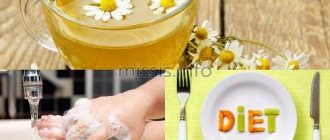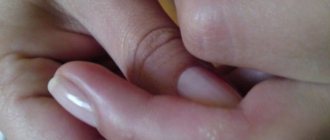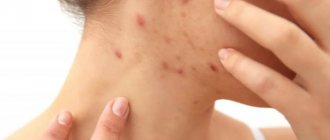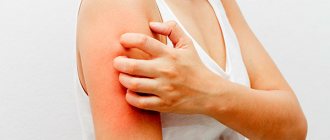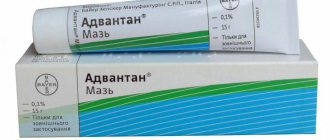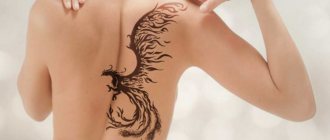Causes of watery acne on the body
The appearance of watery blisters is caused by blockage of the sweat glands. Under the influence of various factors, the excretory ducts expand, and small cysts form in them as a result of the outflow of secretions. The walls of the cavity stretch, forming bubbles with liquid.
Malfunction of the sweat glands, which leads to the formation of a blistering rash on different parts of the body, is a consequence of various diseases:
- Heat rash . Water pimples with a diameter of 1-3 mm appear on the skin of the torso, arms and legs. They merge with each other, forming large bubbles.
- Dyshidrotic eczema. Pathological elements 1-5 mm in diameter, filled with clear liquid, appear on the palms and soles. After some time, the bubbles burst, forming erosions.
- Allergy . Most often, an allergic reaction in the form of watery pimples, accompanied by itchy skin, occurs after an insect bite.
- Pemphigus vulgaris. Bubbles are observed in different parts of the body, but more often on the chest, back, and inguinal folds.
- Haley-Hailey disease. A person develops a rash in the form of small blisters filled with liquid on the neck, armpits, inner thighs, groin area, and perineum. In areas of rashes, the skin becomes red and inflamed.
Also, the causes of the unpleasant symptom can be hormonal imbalance, parasitic infestations, and external irritation.
Watery pimples on the face
Various types of rashes on the face are often caused by hormonal imbalances and disruption of the sebaceous glands.
Be sure to read:
Why do blackheads appear on the back: how to get rid of comedones at home The
pathogenesis of watery acne is based on dysfunction of the sweat glands, which develops for the following reasons:
- Hormonal imbalances. In women, acne with exudate develops due to menstrual irregularities, during pregnancy, or when taking oral contraceptives.
- Impact of physical factors. Pathological changes on the face are observed when exposed to sunlight or frostbite.
- Infections . With herpes, blisters are observed on the lips and around the wings of the nose. Chicken pox is characterized by the appearance on the face of bullae - blisters more than 5 mm and vesicles - pustules less than 5 mm.
- Influence of chemical components. The use of low-quality cosmetics contributes to clogging of the excretory ducts and the formation of serous acne.
With allergies, pathological elements on the face are also observed. It is important to carry out a differential diagnosis of allergies. Only a doctor can do this.
Watery rashes in children
Due to immature immunity, children are more susceptible to various diseases, the symptoms of which are blisters on the skin.
But not only diseases contribute to the appearance of pathological elements on the body.
- Improper hygiene, synthetic clothing, and poor-quality diapers contribute to the development of prickly heat. The rash is most often found on skin folds.
- Allergy. A child develops an immunopathological reaction to foods, especially exotic ones and those with a high protein content. Rashes may be the result of non-compliance with the dosage regimen of medications or insect bites.
- Infectious diseases: measles, chickenpox, rubella.
- Streptococcal infection. The pathology is very common, since the route of infection is contact (through toys, clothes, etc.). When infected, small blisters with transparent contents appear on the skin, mainly the face.
- Immaturity of organs and systems. In babies, the process of thermoregulation is not fully developed, which contributes to the accumulation of fluid in the pores.
The child’s body is weaker and the development of pathology occurs faster. It is important to seek medical help promptly.
What to do if watery acne on the body itches?
The appearance of itching indicates the progression of the pathology. Scratching watery elements is dangerous because it can cause infection.
Be sure to read:
Pimples on the stomach: reasons, what to do if red pimples appear and itch.
To reduce the severity of unpleasant sensations, different means are used:
- Antihistamines have an antipruritic, antiexudative (removes swelling) effect. Eliminate the skin reaction to the irritant and prevent the spread of the rash.
- Rubbing with ice. In case of severe itching, treat the affected areas with ice. The disadvantage of this method of eliminating itching is the short-term effect.
- Treatment with weak antiseptic solutions. For rashes on the face, wash with a solution of potassium permanganate or furatsilin.
If there are blisters on the skin, drink drinks and foods that increase sweating with caution: green tea, alcohol, spicy, fatty foods. Increased work of the sweat glands can worsen the condition.
Practical advice
The main discomfort from rashes is that they itch. But under no circumstances should you scratch them, since microtraumas resulting from the bursting of bubbles can cause a secondary bacterial infection. This will only aggravate the situation and worsen the child’s condition. To prevent the rash from itching, you can give your child an antihistamine.
If there are signs of an infectious disease, you should never self-medicate. If you have fever, nausea, diarrhea and vomiting, you should definitely consult a doctor. The younger the child, the more severely he suffers from an infectious disease. In addition, many pathologies can provoke serious complications.
Other useful tips for parents:
- if 10-15 hours have passed since the rash appeared and it has not disappeared, it is necessary to examine the entire body and write down the location of the rash, measure the temperature, and then consult a doctor;
- Before consulting a specialist, it is allowed to treat the rash with an antiseptic drug.
In the first year of life, children often develop various rashes. This is explained by the fact that delicate skin is still only adapting to new conditions. If a rash appears after sleep, if there is no fever in the background, there is no need to worry. If the rash does not cover most of the body, then most likely it is not dangerous. Otherwise, you should seek help from a specialist.
Treatment of water acne
Therapy for watery pimples involves eliminating the factors that cause their appearance and normalizing the functioning of the sebaceous glands. Since this symptom is characteristic of various diseases, a doctor should identify the true cause. Adequate therapy will not only relieve the pathology, but will also avoid complications and relapses.
An integrated approach is important in treatment. The use of medications will be weakly effective if hygiene rules are not followed and poor diet. In case of any pathologies, the body's resources are depleted; it is necessary to consume minerals and vitamins.
Along with traditional medicine, alternative methods are used, but only after consulting a doctor. A specialist will help you choose the best options that will speed up the recovery process.
Treatment of rashes with folk remedies
The advantage of folk remedies is their accessibility and versatility.
They are suitable for use regardless of the cause of the unpleasant symptom.
- Treatment with aloe juice. The plant has a bactericidal, regenerating effect, reduces burning sensation and irritation. Freshly squeezed juice is applied to the affected areas and washed off with water after half an hour.
- Decoctions and infusions of medicinal herbs. Chamomile and calendula suppress the growth of pathogenic flora, cleanse pores, and soothe the dermis. Low concentrations are suitable for young children. Decoctions are used to wipe areas with rashes and added to baths.
- Applications from a decoction of oak bark. A tablespoon of the dry component is poured into 200 ml of hot water. Use the cooled infusion to wipe the areas with the rash.
Be sure to read:
What does a pimple on the forehead mean: folk signs
The remedies are used until the symptoms disappear completely.
Drug therapy for watery acne
The doctor selects the medication based on the cause and clinical picture of the pathology.
Pharmacological therapy may include the following types of medications:
- antihistamines: Suprastin, Zodak;
- antiviral agents: Acyclovir, Famvir;
- antiseptics: Povidone-iodine, Fukortsin;
- antibacterial ointments: Neomycin, Oxytetracycline.
Oral ones are used for severe disease. The course and dosage are determined individually.
Folk remedies
Along with the main treatment, you can use your grandmother’s recipes. For example, use aloe or celandine against herpes. You need to squeeze out the plant juice, moisten a gauze bandage with it, apply it to the affected area, cover it with cellophane, bandage it and leave it overnight. You can also prepare a healing solution from 4 drops of bergamot oil, 2 drops of tea tree oil and 1 tsp. alcohol Use this product to lubricate blistering rashes 2 times a day.
A bath with the addition of chamomile decoction helps relieve itching from chickenpox. To prepare it, adhere to the following proportions: 100 g of raw materials per 1 liter of boiling water. Chamomile should be brewed, strained and added to bathing water. Take a bath in the morning and evening. If you mix chamomile, lemon balm and calendula in equal parts, you can prepare an infusion for oral administration. You need to pour 1 tbsp of boiling water over a glass. l. vegetable mixture and leave for 15 minutes. The volume of liquid obtained after filtering is divided into 3 times and drunk warm during the day.
Urticaria is treated with nettle decoction. It is prepared like this: 200 g of chopped herbs are poured into 5 liters of water and boiled over low heat for 5 minutes. Then remove the broth from the heat and let it brew for 30 minutes. After filtering, 2 liters are poured and added to the bathtub. The procedure is repeated morning and evening, for 3-7 days, until the rash disappears. Another remedy is celery root. You should chop the root vegetable and squeeze out the juice. Drink it 4 times a day, 1 tbsp. l., and the paste is applied as a compress to the sore spot.
For those who suffer from dyshidrosis, a recipe made from blackberry leaves will help. It is prepared as follows: 100 g of crushed raw materials are infused in 2 liters of boiling water. The resulting product is used to wipe the affected areas several times a day. Sea buckthorn oil is also used to treat watery acne. It has remarkable antiseptic, softening and wound-healing properties.
For vesicular rashes of various origins, you can use lotions from freshly squeezed juices of agave, potatoes, and pumpkins. A gauze napkin soaked with them is applied to the pimples, fixed with adhesive tape and left for half an hour.
Preventing rashes
Simple preventive measures will help avoid the appearance of watery acne:
- compliance with hygiene rules;
- use of high-quality skin care cosmetics;
- proper nutrition, exclusion from the diet of foods that can cause allergies;
- taking vitamin complexes;
- avoid prolonged exposure to the sun and hypothermia;
- use of hormonal drugs as prescribed by a doctor.
At the first symptoms you should consult a doctor. Even if the manifestations are not of a dangerous nature, a specialist will tell you how to quickly and without negative consequences from them.
Diagnostics
To diagnose a disease in which the body is covered with watery pimples, a visual examination alone is not enough for a dermatologist. This is explained by the fact that this symptom may indicate multiple disorders and pathologies.
To make a correct diagnosis, in addition to an external examination and medical history, additional laboratory tests are performed:
- biochemistry ;
- ultrasound examination of the gastrointestinal tract;
- allergy tests;
- scraping from the affected area.
If necessary, you may also need to consult an endocrinologist, allergist and other specialists.
